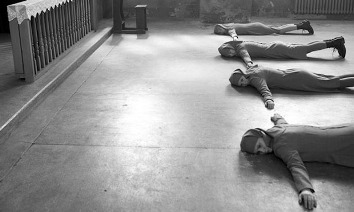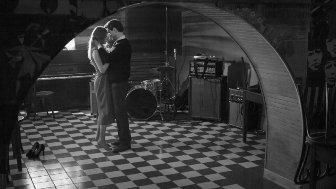I thought that I had already watched the two best movies of the year in Birdman and Boyhood, but after watching this beautiful and haunting film, I’m not so sure. Ida was set in the drab and joyless country of Poland, around 1962, at the height of the Cold War. Ida was a young woman who had been orphaned and sent to a convent and was about to take her vows. Before she does, however, the Mother Superior ordered her to visit her only known living relative, her estranged Aunt. The plot was simple and engrossing. Ida meets her aunt and was cooly rebuked, only finding out from her that she was really a Jew. After reflection, Aunt Wanda decided to embrace Ida and told her of a dark secret about her past, and they struck out to discover what really happened to their family during World War 2.
The camera work and cinematography were stark, lapidary and gorgeous. The entire movie was like an Ansel Adams slideshow with blacks and greys, every scene reflecting the grim landscape of post-war Poland. There was not one scrap of accidental beauty or softness in this film. The only scenes that almost connect us to anything remotely enjoyable were the great jazz jams in the club, but even that setting was hopelessly bleak and soul-sapping. Even the towering trees seemed to silently scream out for the even more silent and dead victims of one of the darkest periods in World History.
Ida was only 80 minutes long and magnificently acted and edited. “I’m a slut and you’re a Saint” was brilliantly uttered by Wanda to the pensive and stoic Ida as they both tried to both discover and purge the demons from their past. That’s all I’m writing about the plot, if you want analysis of the plot, you can read it elsewhere. I’ll just say that Agata Kulesza as Red Wanda delivered one of the greatest acting jobs by an actress that I have ever seen.
This was an art film, a beautiful film, but it was all about the country of Poland in all its ugliness during World War II. While Poland has always had the bad geographical luck of being located between Germany and Russia, this historical misfortune does not ameliorate the immoral and criminal behavior of many of its citizens during the big war. It’s no secret that many Europeans, especially Eastern Europeans did not exactly mourn the attempted genocide of the Jews by Nazi Germany. It is my opinion that The Holocaust could not have been orchestrated in any other country in Europe other than Poland. A huge number of Polish peasants bought fully into the Nazi propaganda that the Jews were the leading cause of the War. It was also obvious that the Pope and the Catholic Church sat on their dead, child-diddling asses while the Holocaust occurred.
Moccurred been written about the institutionalized attempted eradication of the Jews by Nazi Germany via their Death Camps. This film deals with the complicity of some of the Polish gentry in not only looking the other way, but actually participating in the genocide. If you want to read about the Death Camps, read I Cannot Forgive, by Rudolf Vrba. Â If you would like to read a terrifying account of the attitudes of those who hated and brutalized the “Christ Killers” with equal ferocity of that of the 3rd Reich, try The Painted Bird by Jerzy Kosinski, an excruciating and surreal account of a young Jewish orphan boy’s treatment by the peasants in Eastern Europe during World War 2. I realize that the authenticity of The Painted Bird has been challenged, but every fiber of my being thinks that a lot that was written was truth. The film starkly shines a light on the guilt, culminated by an unforgettable scene of the Polish man, wracked with guilt, dirty and grimy in an uncovered grave of his victims.
Ida is certainly the best foreign film of the year, if not the best film overall. I cannot recommend it enough, it is simply beautiful.


